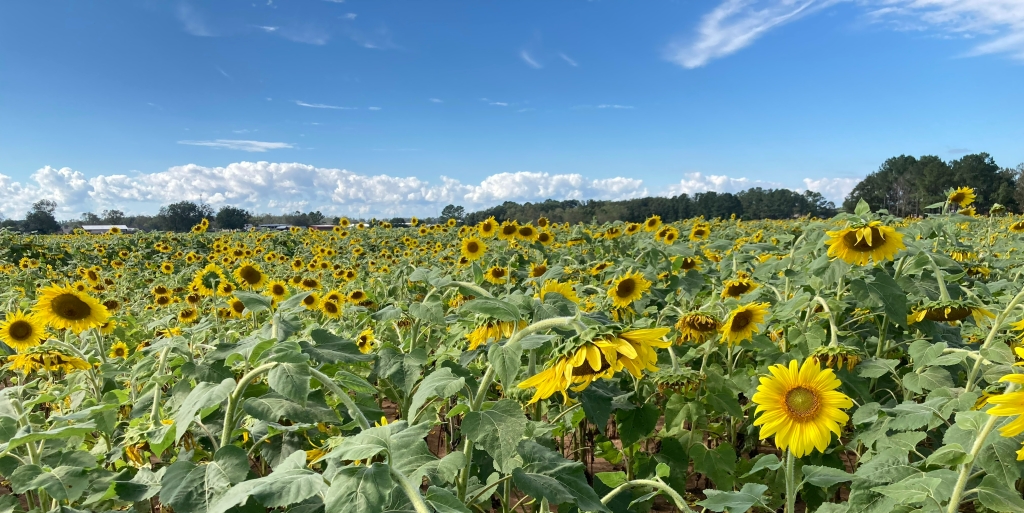For two hours on the last three Mondays I was in my element teaching a class on creative writing at Fairhope Public Library.
Nine wonderful library patrons paid the $20 refundable deposit and showed up for “Great Readers Make Great Writers: A Crash Course in Creative Writing.” It was a true crash course as each two-hour session covered creative nonfiction, fiction, and poetry.
Creative Nonfiction
In the first class, we got to know each other a little. My students ranged in age from thirty to ninety. The ninety year old is writing a gossip column for her community newsletter. The youngest is a coworker, sculptor, and installation artist. Many were retired, including several teachers, but I also had a stylist from a local salon.
Students enjoyed “Somehow Form a Family,” a personal essay by Tony Earley, and learned some lessons on craft from “On Keeping a Notebook,” by Joan Didion, and “This is What the Spaces Say,” by Robert Root.
The writing exercise I gave them for the first class was to skim through their notebooks, journals, or diaries, find an entry (a word, fragment, sentence, paragraph etc.) that interests or intrigues them and start writing.
“Reading fuels writing,” I said. When we read we are consciously and subconsciously learning and absorbing things we like and dislike. In this way, I believe each writer gleaned something from the readings and incorporated that little something into their writing, whether it was pop culture, a small detail, a setting, or a historic moment in their life.
For the next writing exercise, I handed out postcards from my collection and asked students to write to someone. After they finished writing, I told them to give the postcard to the person on their left. I instructed them to use the postcard given to them by a classmate as inspiration for a fictional writing journey for the next class.
Fiction
The fiction reading list included major amputee characters, a subject near and dear to my own heart.
“The Ironworkers’ Hayride,” from Robert Olen Butler’s collection Had a Good Time, was enjoyed by all the students for its humor but “Good Country People,” by Flannery O’Connor drew mixed reviews, mostly for being a bit too depressing. They did enjoy O’Connor’s ending.
We read aloud Chapter 3 from The Grapes of Wrath, by John Steinbeck. “The story of a turtle.” I told my students, but it’s so much more. I called it “Steinbeck’s three-page metaphor for living.”
The flash fiction I assigned left most readers confused. Perhaps this was due to my selections, or the newness of the genre. In very short fiction you have to be able to make leaps in the reading and that’s something difficult to do, even for me.
The fictional pieces from postcards, which is how Butler wrote his collection of stories, Had a Good Time, were fabulous.
They used the postcard images (Cape Cod and Tiffin Motorhomes) or the words on the back to write an account and most of them responded to the writer in a letter, but with a fictional spin about blacksmithing, dieting, and traveling.

Poetry
Students gave mixed reviews on a chapter from The Odyssey, by Homer and translated by Robert Fagles, and the nature poems by Robert Frost.
“Facing It,” by Yusef Komunyakaa and a “Poem Guide” from The Poetry Foundation, is where we spent the most time. Having the guide helped students understand the depth of poetry upon a close reading of a few lines.
In addition to Homer’s epic poetry, the nature poems of Frost, and the ekphrastic poem of Komunyakaa, I chose works from two actual amputees.
“Invictus,” Latin for unconquered, by William Henley was written from a hospital bed after doctors believed Henley, who already had one leg amputated, was at risk of losing the other. They saved the leg, and Henley went on to achieve what I can only dream of. With “Invictus,” he became a one-hit wonder, but to his friend Robert Louis Stevenson he was much more. Henley became the inspiration for Long John Silver in Stevenson’s classic pirate novel, Treasure Island.
Jillian Weisse’s poems of her amputee childhood brought back some memories of our experiences in “Below water,” and some humor in “Holman, Age 10,” from her collection, The Amputee’s Guide to Sex.
Read, contemplate, imagine, think, reflect, write.
Many said writing the poem was the most difficult exercise but they used song lyrics, humor, civil rights, rhyme and repetition to discover how writing is a form of artistic expression.
These never happen in order, but having a few steps to get the creative writing process going is useful to all artists, including creative writers.
I heard recently that creative writing is no longer offered at many public schools. While this saddens me, I would like to keep creative writing classes alive in the public library, an idea that dovetails with my Master of Fine Arts degree in creative writing.
Let me tell you how fortunate I am to offer these programs. The leadership of Fairhope Public Library, recently named a “Gold Star” library by the Alabama Library Association (ALLA), encourages staff and patrons to share their expertise, hobbies, and passions with their communities. Sharing knowledge and information is the cornerstone of public libraries and I believe growing these learning, artistic, and continuing education opportunities is the future of public library programing.
Do you agree? If so, check out Fairhope Library for what’s happening soon (Phil Klay author of Redeployment), and watch the “Events Calendar” for my summer creative writing series. I love sharing what I’ve learned with others, but there’s nothing more rewarding than hearing those voices read writing they have created.




